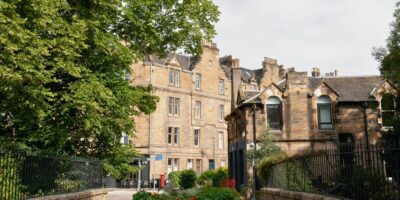
Buying a listed property in Scotland | Property finders advice
Buying a listed property can be an exciting and rewarding experience, but it’s important to understand the unique challenges that come with owning a piece of history.
Listed properties are buildings that have been designated as having special architectural or historic interest, and as such, they are protected by law. This means that any changes or renovations to the property must comply with strict regulations to preserve its character and heritage.
However, for those who appreciate the beauty and charm of historic buildings, owning a listed property can be a dream come true.
In this blog, we’ll explore the ins and outs of buying a listed property, and provide tips and advice to help you navigate the process with confidence.
What are listed properties
Period, characterful homes are often a delight to live in, a home which has a story to tell, a story that that in some cases officials deem important enough to officially list the building.
To be listed a building must be of special significance either historically or architecturally, a dedicated team assess all applications for designations.
The main reasons a property will be selected for listing are the rarity and age of a building, any close associations with history and being of architectural interest.
Listed buildings are not just houses, castles and places which were once used as homes, they can be structure of note and can include bridges, bandstands, fountains and statues. A building can also be listed after its been repurposed, for example an industrial building which has been converted into flats.
Different types of listing
In Scotland there are three different types of listings depending on the buildings relative importance.
Category A includes buildings of international or national importance. Buildings may also be listed Category A if they have particular architecture or are of historic reference. This type of listed property will display almost entirely unaltered examples of that particular building type, style or the period within which it was built.
Category B are often buildings of local or regional importance. Category B listed buildings can also be examples of a specific period, building type or style which may have been altered.
The lowest listing is Category C, buildings of local importance or those with some example of a particular period or style. Category C buildings might be as they were originally built or they may have been moderately altered. This category also includes traditional buildings that group well with other listed buildings.

Buying a listed property
For the most part owning a listed building is much like owning any other type of property, there are several key differences to be aware of before making a decision to purchase a listed building.
Specialist Survey
When considering purchasing a listed property we would strongly recommend you instruct the services of a specialist surveyor. Whilst the Home buyers report will provide you with all the necessary information and should be thorough, having a surveyor who specialises in historic properties could provide important additional information regarding the property.
When you’re planning to purchase a listed building the costs of maintenance and repairs can be higher than those of non-listed properties as you may need to use specific materials and specifically skilled tradesmen. A specialist surveyor might be able to provide a better forecast for the property’s condition allowing you to make realistic plans.
Alterations and repairs
If you want to make an alteration, build an extension or make a demolition you must apply for listed building consent. There are rules in place to protect to history of a property. There are also a number of grants and funds available for people who’d like to carry out works on their historic building, the Historic Environment Scotland provides information on who’s eligible and how to apply.
It can be of great benefit to employ the services of an experienced planning consultant, architect or heritage specialist to advice on what is acceptable from the very start, try and find one who is based locally as they’ll have the most valuable input.
When carrying out repairs on a listed building the chances are that you won’t be altering the buildings character but it’s recommended to make the appropriate calls to check what you’re planning to do is ok. You might need to use specialist materials or in some cases, where modern methods are not suitable for the building you might need to employ the services of a skilled tradesman.
Insurance
Specialist insurance could prove invaluable and we would strongly recommend you consider a policy with specifics to your listed home. Whilst this might come at an increased cost it may pay dividends in the future should anything unexpected happen. Be sure to check the policy includes any works that might have been carried out by previous owners without the correct consents. If you’re unsure on any aspects of the insurance your solicitor will be able to provide guidance.
Listed property in Scotland
There are over 45,000 listed buildings in Scotland, a large concentration of these are in Edinburgh. Less than 10% of these listed buildings are category A, the majority are Category B.
Examples of Category A buildings include the Palace of Holyroodhouse in Edinburgh and Glasgow Cathedral. Category B buildings of note include the National War Museum within Edinburgh Castle and Harbourmaster’s House, Dysart in Fife. An example of a Category C building is The Belmont Picture House in Aberdeen.
Property Finders in Scotland
From stately homes to remote castles, period townhouses and country manors many properties are listed across Scotland. If you’re considering purchasing a listed property or looking for a period home and are aware that some of those you consider might be listed, we can provide guidance throughout the search ensuring you make an informed purchasing decision.



